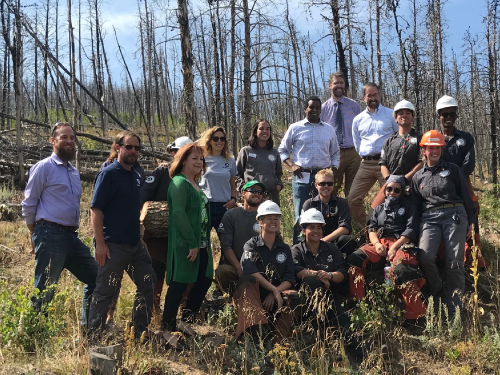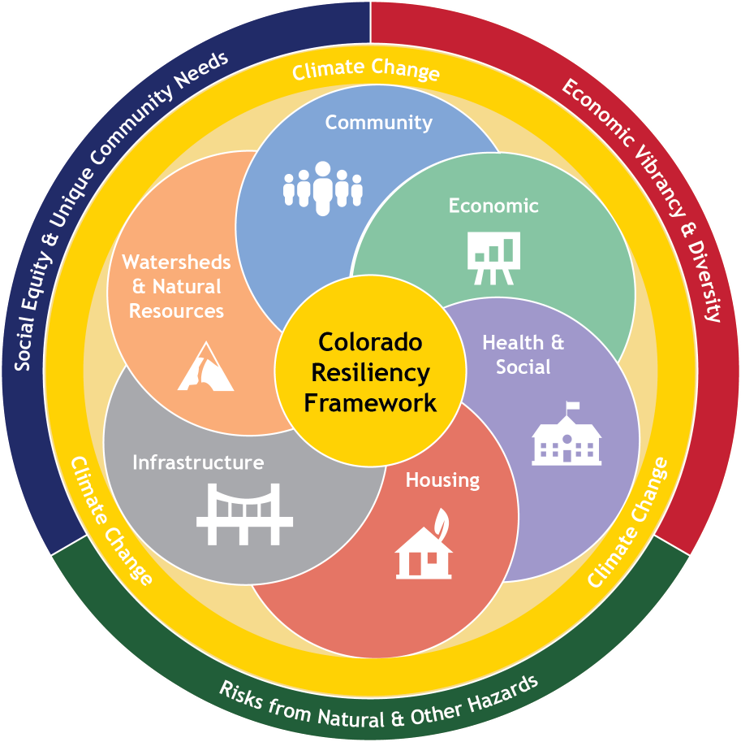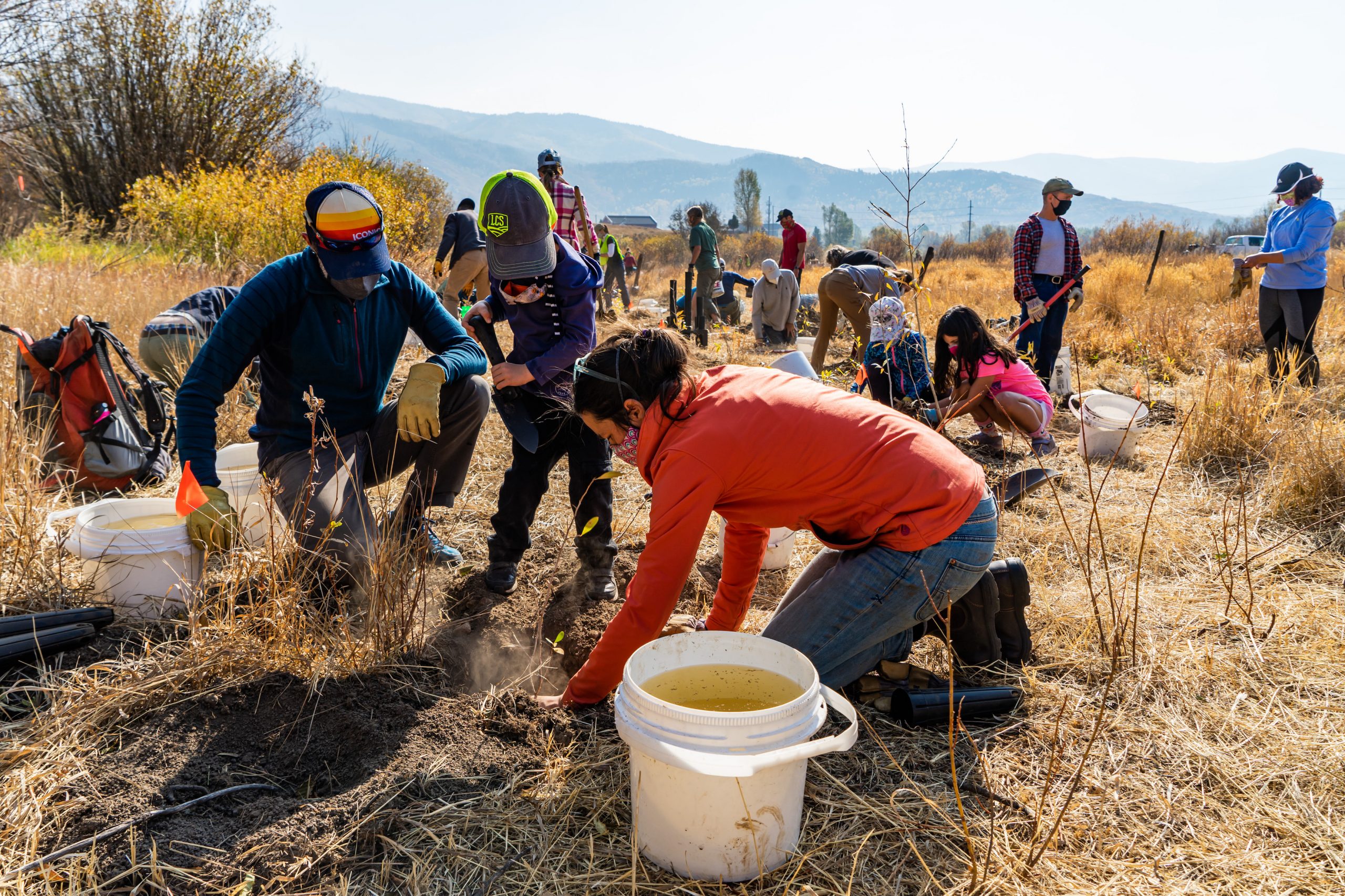Adapt Goal
Adaptable communities are the foundation of resilience
Photo by Dennis Schroeder, NREL
Adaptation Goals
Colorado aims to develop and implement adaptation strategies that reduce future risks, vulnerabilities, and losses. Building a better future amid current crises and changing environmental, social, and economic conditions has only reinforced that it takes everyone working together to protect each other and rebound better than before.
A resiliency approach to local planning emphasizes collaboration, community building, connection across sectors, and consideration of future conditions and challenges.
Holistic Approaches to Risk and Vulnerability
- The Colorado Resiliency Framework provides a roadmap of 27 strategies for adapting to our changing environmental, social, and economic conditions.
- State departments and agencies are integrating adaptation into operations and investments and supporting local governments in developing adaptation strategies that build resilience today – instead of waiting on tomorrow. An example includes CDOT’s Policy Directive 1905.0: “Building Resilience into Transportation Infrastructure and Operations.”
- The Colorado Resiliency Office, Colorado Energy Office, and Colorado Department of Public Health and Environment developed the Climate Change Webinar Series to equip local governments in Colorado with the tools, resources, and knowledge to reduce greenhouse gas emissions and build a more resilient future.

Resiliency is the ability of communities to rebound, positively adapt to, or thrive amidst changing conditions or challenges—and to maintain quality of life, healthy growth, durable systems, economic vitality, and conservation of resources for all generations. See a glossary of common resilience-related terms here.

Is your community prepared for natural hazards and major disruptions? These resources can help your community adapt and thrive into the future:
+ Community Resilience Planning Toolkit
+ Pre-Disaster Recovery Planning
+ State Agency Resiliency Playbook

Is your community recovering from a disruption? The post-disaster recovery toolkit includes six steps to be taken by local governments after a small or large disaster event.
Colorado’s Six Priorities for Advancing Resiliency
- Future-Ready Workforce & Economy
Fortify Colorado’s workforce to support a future-ready, regenerative, circular economy.
- Climate & Natural Hazard Resiliency
Reduce Colorado’s risk from climate change and natural hazards through integrated land use, ecosystem, and natural resource planning, management, and investment.
- Building & Infrastructure Sustainability
Reimagine and modernize Colorado’s built environment to be both climate and hazard resilient and environmentally sustainable.
- Agriculture & Food Security
Cultivate a robust state and local food system, from agriculture to distribution and consumption.
- Housing Attainability
Increase the supply of attainable housing throughout Colorado, including affordable housing options for workforce populations and those who most experience marginalizing.
- Community Capacity
Empower Colorado communities to improve local resilience, equity, and capacity.

Apply for Funding
Funding is critical to implement resilience practices and measures in your community. While allocating general funds is one option, often that is not enough to cover the full breadth of work that needs to be done. Thankfully, there are many grants, loans, tax credits, and other resources available to communities in Colorado.
Community Resilience Funding COVID Recovery Wildfire Recovery Water-related Funding Agriculture-related Funding Transportation-related Funding Weatherization Assistance
Case Study: San Miguel County
San Miguel County has taken on ambitious clean energy projects that include energy efficiency, renewable solar energy, and battery storage. Together, these projects will allow the County to reduce greenhouse gas emissions and create a microgrid – a local energy grid that can operate separately from the primary utility. To complete these projects, San Miguel County is leveraging two major State funding sources with the goals to 1) become carbon neutral ASAP; 2) save taxpayer dollars; 3) increase resiliency for mission-critical services (such as backup power for an Emergency Operations Center and broadband); and 4) align with the 2019 Colorado Climate Action Plan.
Case Study: City of Aspen & Yampa Valley
Natural and Working Lands include forests, farms, rangelands, grasslands, urban greenspace and wetlands, and their potential emission sources (e.g., wildfire emissions) and carbon sinks (e.g., forests and grasslands absorbing CO2). The City of Aspen and Yampa Valley Sustainability Council are exploring methods to account for land-based carbon and opportunities to cut emissions through "Natural Climate Solutions." Natural Climate Solutions are conservation, restoration, and improved land management actions that increase carbon storage or avoid greenhouse gas emissions.

